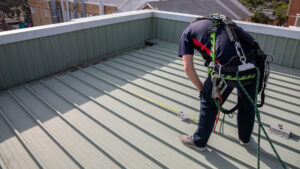Keeping workers and visitors safe from injury is ultimately the responsibility of any person conducting a business or undertaking (PCBU). This is a responsibility that must be taken seriously.
If a building or work site has a height safety system, it falls to the PCBU to ensure that the system is properly installed and maintained.
Perhaps one of the most important aspects of meeting this obligation of responsibility is ensuring regular compliance inspections are carried out in order confirm the system is in good working order and compliant with relevant standards and regulations.
Unfortunately, only a minority of businesses actually have adequate systems which are properly maintained and looked after. This can be attributed to a lack of understanding about the requirements regarding height safety system compliance and its importance.
In this blog post, the experts at HSE take a look at 5 commonly asked questions about height safety compliance inspections.
1. What exactly is a height safety compliance inspection?
A height safety system recertification is, plainly, the process of conducting a regular inspection of height safety, roof access and fall protection systems to ensure they are in good condition.
These inspections also ensure the design and installation of a system is compliant with Australian standards and has been completed to the manufacturers’ instructions and guidelines.
2. How often are compliance inspections required?
Compliance inspections of safe access and fall protection systems are required at least annually under Australian standards.
However, PCBUs should take into consideration whether their particular safety system could benefit from more frequent recertification inspections.
For example, a height safety system which is used extensively every single day by multiple workers who need to use anchor points or retractable lines is inevitably going to suffer from more wear and tear due to constant use as opposed to a system that is not used on a daily basis.
A PCBU may be liable under current legislation for an accident occurring which would have been otherwise avoided if signs of wear and tear had been checked for earlier.
If a PCBU is unsure how often they should be arranging recertification inspections based on what is both required by regulations and what is reasonably practicable, they should contact a professional company to assess their safety system and request a recommended recertification schedule to help minimise liability issues.
3. What happens during a compliance inspection?
As part of the inspection process, a trained inspector will access the system and thoroughly check that every aspect of it is solid.
The inspector will thoroughly look for issues such as signs of corrosion, rust or rotting. They will also check that all fixtures are in good condition and that the layout of any anchor points are within correct fall distances. As every height safety system is different, inspectors will carry out specific checks based on the individual system.
The inspector will take photos of everything they inspect to form part of the record of the inspection and will update the compliance plate which should always be displayed in a place visible to anyone who accesses the system.
For a step by step look into the inspection process, see our blog on: How a Height Safety System Recertification Inspection Works
4. Who is eligible to conduct height safety system recertifications?
Under the relevant standards, recertification should always be carried out by a “competent” person. Therefore, PCBUs should look for highly experienced service providers.
A reliable way to be confident that you are engaging a competent provider is to enquire about any accreditations the provider may hold.
For example, a NATA (National Association of Testing Authorities) accredited body will provide you with assurance that all testing and procedures are thorough and independent.
5. What happens if a height safety system fails its inspection?
If the inspector finds any issues with the system during the inspection, such as a rusted out guardrail, they will inform the PCBU that they are unable to sign off on the recertification. They will then provide the PCBU with a detailed report on what needs to be done to bring the system up to compliance.
If a height safety system fails to be recertified, it is vitally important that a PCBU takes action to remedy any problems as soon as possible. Otherwise, they will be liable for any accidents that may occur as a result.
Want to learn more about height safety system recertifications? Talk to the experts at HSE
We’re proud to be industry leaders in the ongoing recertification of height safety and roof access systems.
We are NATA accredited for compliance with ISO/IEC 17020 and have the broadest scope of accreditation of any height safety company in Australia.
For a no obligation discussion about your individual height safety system and how often you may need to arrange a compliance inspection, simply give us a call on 1300 884 978.





